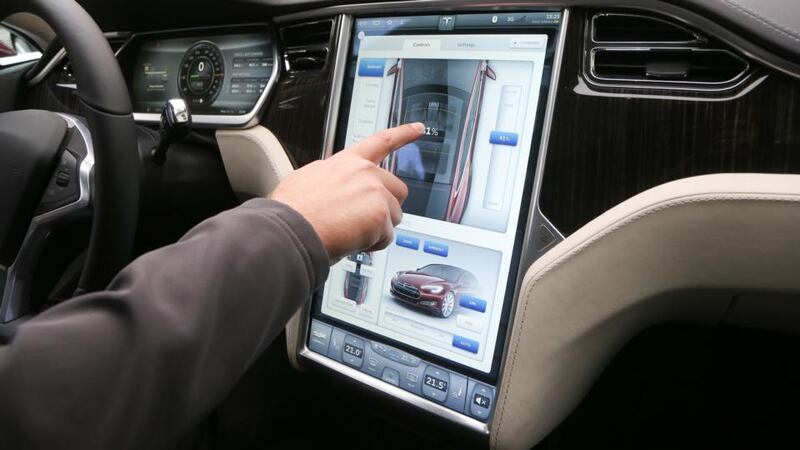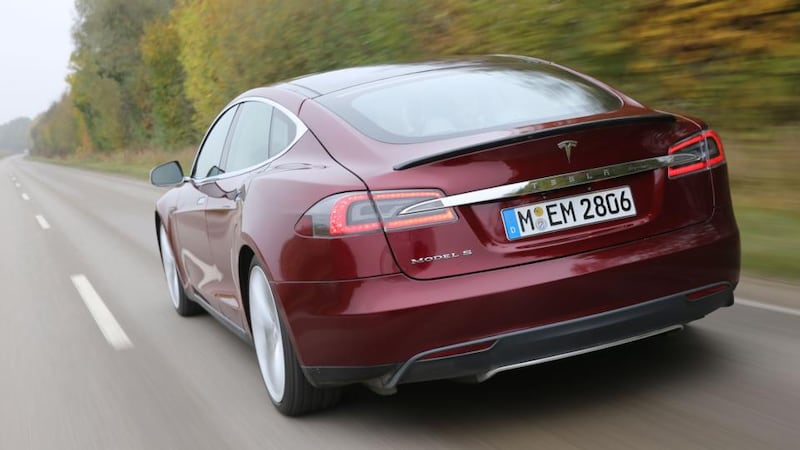It’s billed as the most important American car for decades and it’s hard to disagree. After years of decline, the US auto sector is out to demonstrate that it’s not just a follower in the motoring world. Only this time the charge is being led not from Detroit but from Silicon Valley, and not by one of the Big Three but by a relative newcomer to the motoring arena.
Named after engineering genius Nikola Tesla who designed the AC electricity supply system we use today, the car brand is the latest creation of innovator and entrepreneur Elon Musk. His CV makes even the likes of Steve Jobs look like a bit of a slouch. So far the 42-year-old South African-born businessman has co-founded PayPal and was its main shareholder before it was sold to eBay for $1.5 billion. He has also founded SpaceX, which develops and manufactures space launch vehicles. And in 2003 he entered the car industry. Since then he's caused something of a stir.
Musk will be in Dublin this week for a "fireside chat" with Enda Kenny at this year's Web Summit. While the summit is awash with global tech giants, Musk is premier league, even amongst his peers.


So what of the latest Tesla? Well, the Model S itself is a bit of a revelation. We reported earlier this month on the latest wave of electric cars coming our way, with the BMW i3 first on our shores. Things have advanced since the Nissan
Leaf and little Mitsubishi i-Miev was introduced here. Yet while the infrastructure and tax incentives are in
place, consumers have failed to bite.
Physical punch
So what hope for the Tesla Model S, with a price tag that sits alongside a Mercedes S-Class? We got a chance to spend a few days with the car at a European car of the year event and, amid a plethora of rivals, the Tesla stole the show. No one expected it to be as good as it is.
The most impressive feat is undoubtedly its performance. A 0-100km/h time of 4.4 seconds still doesn’t reflect the physical punch of torque the Tesla has on tap. Kick down on the throttle and amid an eerie silence you are pushed back into the driver’s seat by the sheer force of acceleration as the digital speedometer flickers through the numbers at an illegible rate. It’s phenomenal to think this is a 2.2-tonne family car.
Like the new BMW i3, Tesla has opted to let the accelerator be more of an on/off switch; lift your right foot and the car immediately starts to slow. You seldom need to use the brake.
The electric motor and invertor are contained within the profile of the rear wheels, and the battery is just 10 centimetres thick, sitting under the cabin and between the axles. So, other than the suspension turrets, the car’s mechanical package is as flat as a skateboard, with a much lower centre of gravity than a regular car. That should give the car incredible handling traits, although during our test event the Tesla was put through its paces in the so-called Elk test on a closed airport runway. It showed a tendency to oversteer at higher speeds, with the ESP coming into play and interfering somewhat in the steering feel; but on a more positive note there was practically no bodyroll, thanks in part to the car’s firm suspension.
Externally the makers have opted for a look that boasts sleek coupe lines yet retains a practical four-door family format. With no fuel tank, the car has a massive boot, under which is a deep recess for more bags, or legroom for kids in the two optional rear-facing child-seats. Up front, with no engine, there’s another sizeable front stowage space. So this is in effect a seven-seat family coupe that runs on electricity and matches most prestige performance cars off the starting blocks.
Inside, the most striking feature is the 43cm touchscreen that’s like an iPad on steroids. There are elements of the interior that don’t reflect the premium price tag but overall it’s a really impressive finish from a car firm that’s only 10 years in existence.
One of the strongest feats of the Tesla is its range: it claims it can do 480km at 88km/h between charges, while the firm’s engineers are confident you can reach well over 200km even with a heavy right foot. Two battery options are on offer: a 60kWh and an 85kWh, giving it the longest range of any electric production vehicle.
Supercharging points
Tesla is also setting up support infrastructure for its customers. Special supercharging points have been created in the US and are starting to be rolled out in Europe, particularly in Norway where the Model S has become a surprise hit. Last month the electric Model S was the best-selling car in the Scandinavian oil-rich nation. That's partly down to the mix of incentives available for electric car buyers there, which includes the use of bus lanes and no tolls, local ferry charges or congestion charges, but it's still impressive for a relatively new brand. The supercharging points offer a range of around 320km from a 30-minute charge and are free to use for Model S owners.
With right-hand drive versions due early next year, London is the first port of call for Tesla. It has no immediate plans to enter the Irish market at present, although a spokesman said that it has always been on the firm’s radar given the positive noises emanating from Government about electric cars. Given that prices here would likely be close to €100,000, even if it does arrive here, there’s not going to be a long queue of customers.
And yet, there may well be a niche amongst the few wealthy Irish who are tired of the traditional luxury options of German might or temperamental Italian sports cars.
Tesla, whether through acumen or pure chance, finds itself in something of a sweet spot for a new brand. It’s targeting the sort of customers who will be attending the Dublin Web Summit: tech savvy and relatively young, they reside in a world that’s open to new brands. They are the early adopters and many of them have bulging bank accounts to back it up.
Just like the initial arrival of the early motor car, it’s at the wealthier end of society where these relatively expensive innovations can start to take root. This is not going to be a big seller, despite what Norwegians might suggest.
Nonetheless, it showcases the continuing potential for electric cars, their phenomenal performance on the road, and that the future of the US auto industry depends more on Silicon Valley than Dearborn or Detroit.
THE LOWDOWN Tesla Model S
ENGINE
Liquid-cooled 3-phase AC induction motor, 416PS, 600Nm. 85kWh liquid-cooled lithium-ion battery. Single-speed transmission
PERFORMANCE
0-100km/h: 4.4sec, 213km/h (limited)
EMISSIONS
CO2 (at car) 0g/km
RANGE
Claimed 480km/h @ 88km/h
CHARGE TIME
Five hours at 240v
PRICE
Est close to €100,000
OUR VERDICT
Pricey but otherwise a fully charged new entry to the premium segment












